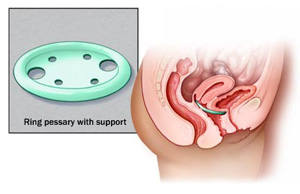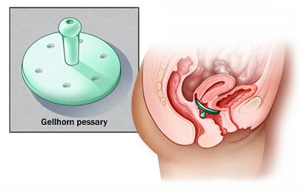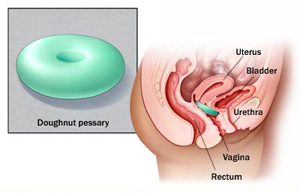Pessary for Prolapse
Addressing Prolapse Problems
Pessaries are the most commonly used non-surgical device for management of pelvic organ prolapse.
A Pessary is a silicone vaginal insert that holds prolapse in place. There are many types of pessaries available, varying in size and shape. The size and shape of pessary chosen is based on your symptoms and your exam. The pessary is typically inserted and removed by the patient. The pessary will remain in place, except when removed by you or your doctor to be cleaned. This is typically done once every 1-3 months.
You will need an exam to determine if this is the best option to manage your symptoms.
At Austin Urogynecology, we place pessaries for a variety of indications including:
- Patients who are not good surgical candidates because of medical comorbidities
- Patients who elect to defer surgery for prolapse
- Select patients with uterine prolapse who seek future pregnancies
- Pre-operative assessment. There are situations when a pessary is placed prior to surgery to see how symptoms in that individual change with the prolapse reduced. For example, in patients with a large cystocele, sometimes a pessary is placed prior to urodynamics to get an idea of what bladder function will look like after surgery.
- Post-operative placement after tension free vaginal mesh repair. In these patients, the pessary is removed 3-6 weeks after surgery.
If you are struggling with perineum prolapse or pelvic organ prolapse, contact Austin Urogynecology today to set up an appointment!
Got questions? Need an appointment? We’re here to help!


